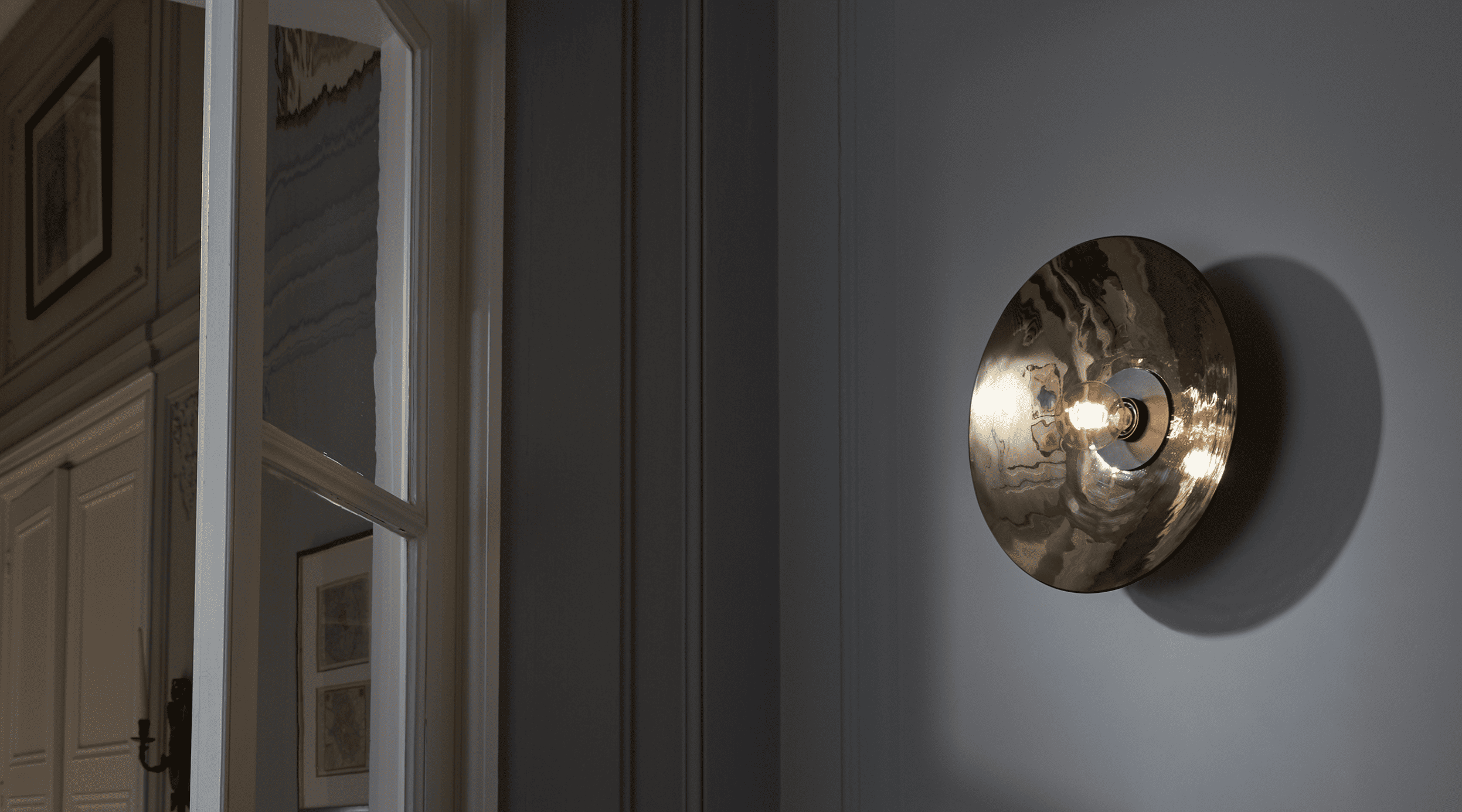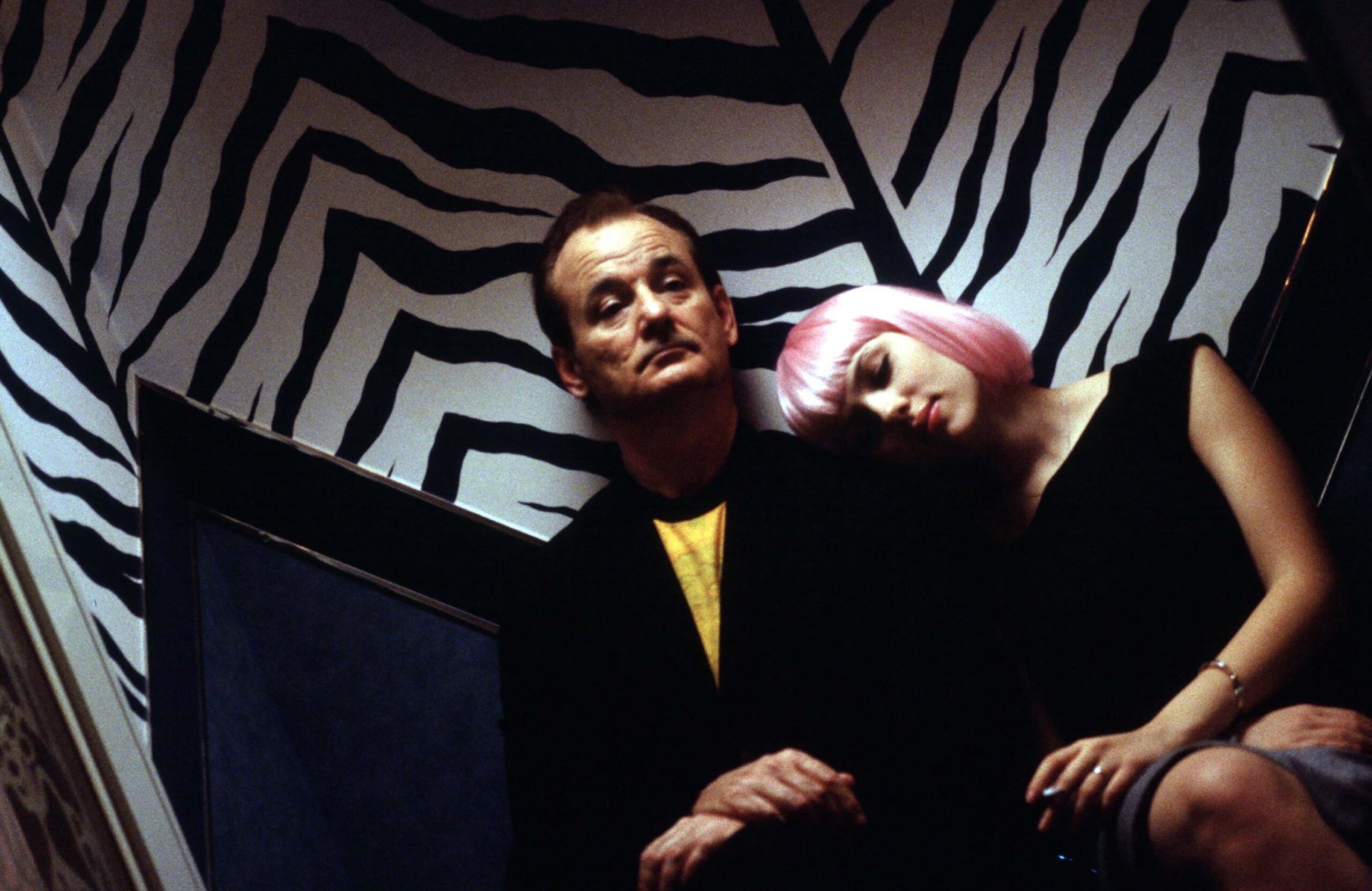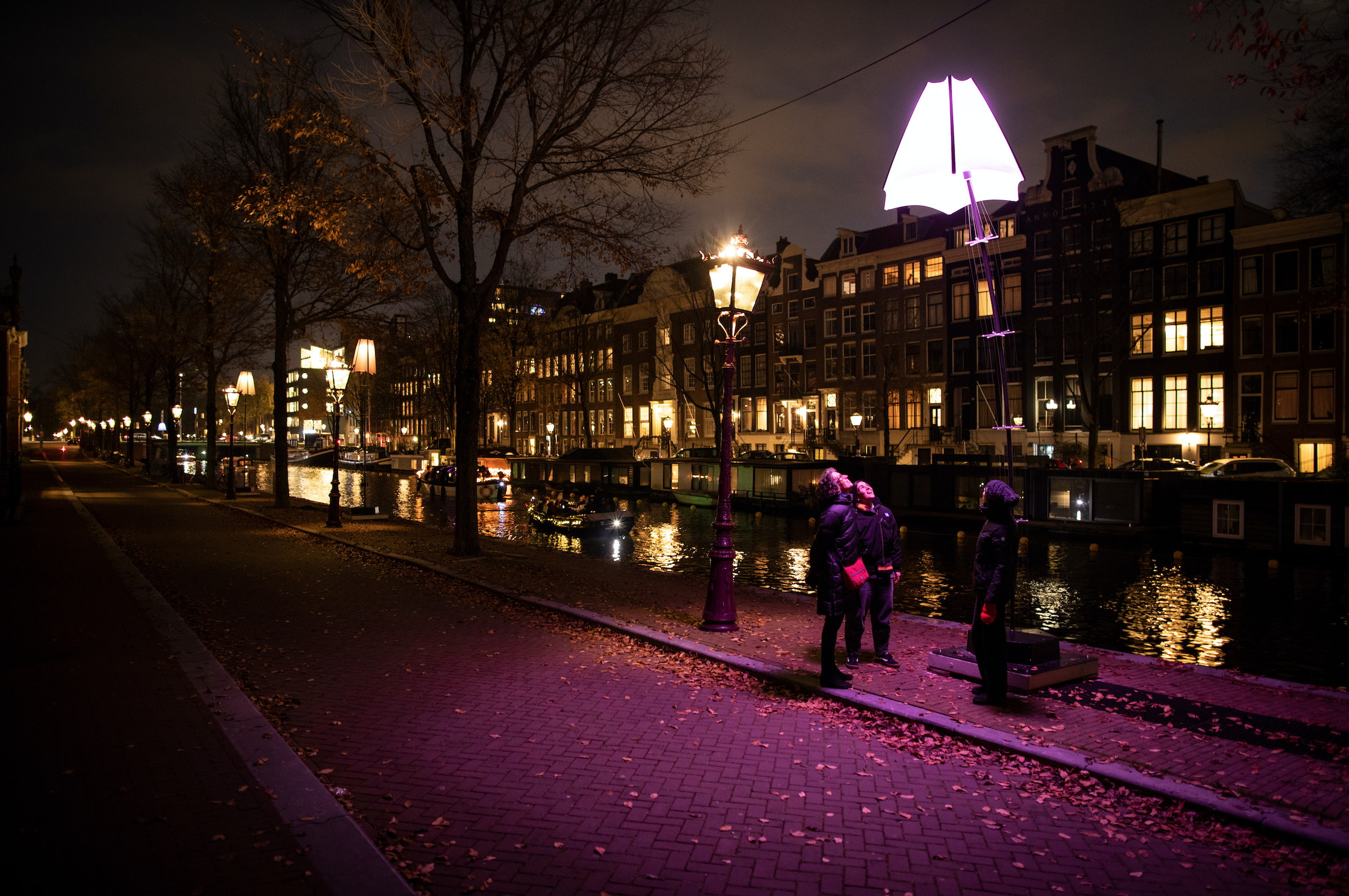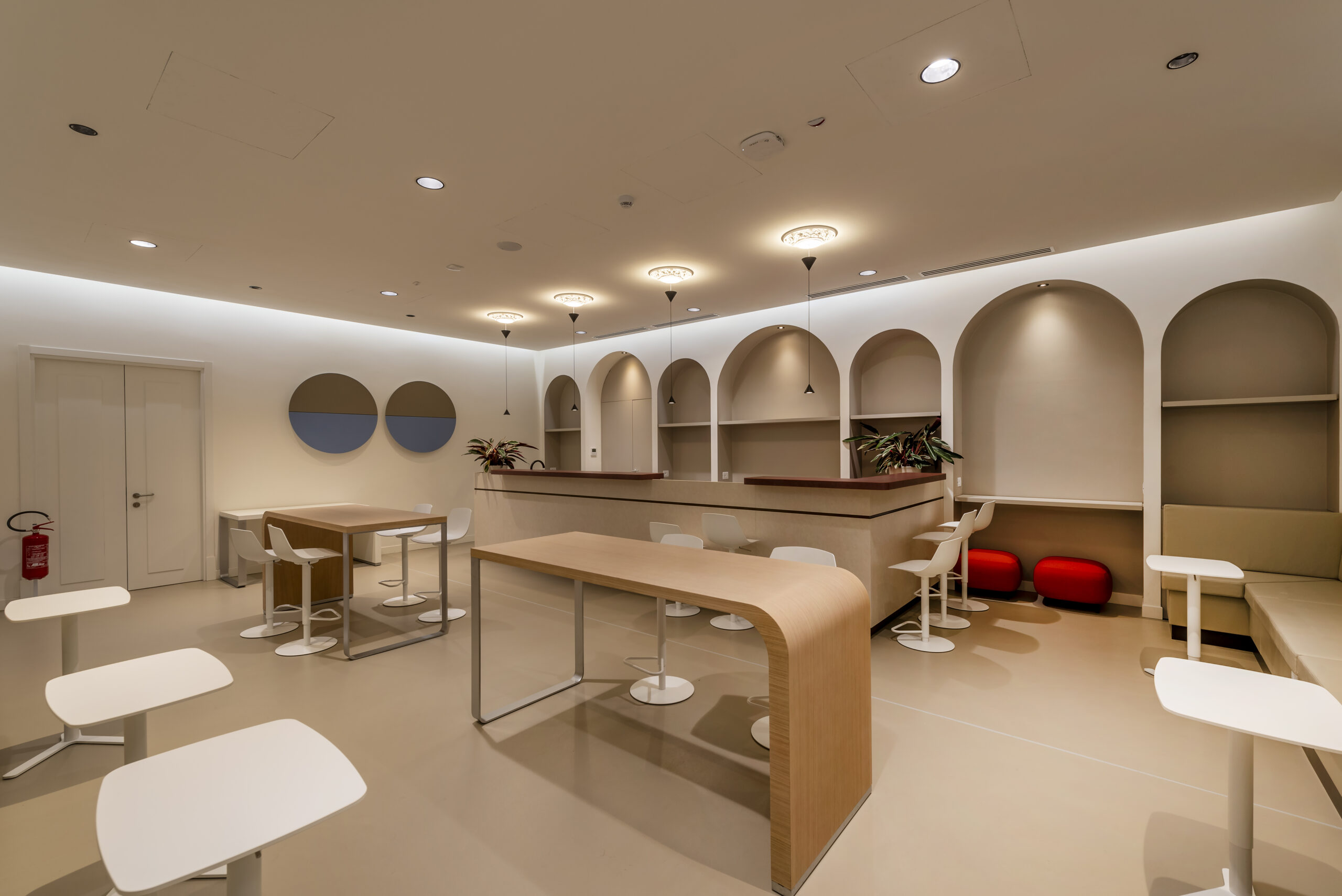The Eclisse lamp was born from a brilliant intuition by Vico Magistretti in 1965, responding to Artemide’s request for a new bedside lamp. «We need a night lamp», they told Magistretti, «because, you know, architect, everyone has a bed». It was during a subway ride in Milan, while thinking about Victor Hugo’s Les Misérables, that Magistretti recalled the “dark lantern” used by Jean Valjean to steal, equipped with a rotating shield to block the light. He immediately sketched the idea on the back of a ticket: a lamp composed of two overlapping spherical shells, one of which could rotate to control light intensity. The result was a concept where the light source could be partially concealed, producing a soft glow reminiscent of a total eclipse.
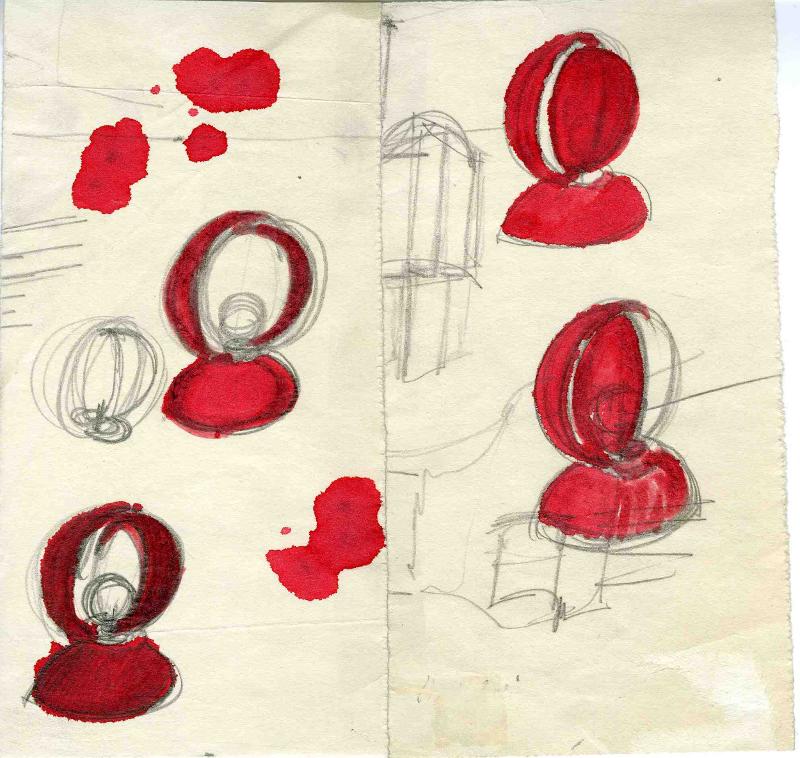
From the outset, Magistretti envisioned Eclisse as a simple, functional object: a small table or wall lamp at an accessible price point. It’s composed of three hemispheres—a flat-bottomed base (with a hole for wall mounting), a fixed outer shell, and a rotating inner shell. The inner shield enables the user to gradually dim the light, transitioning from direct to diffused illumination as needed. Magistretti himself used to say: «The Eclisse lamp is beautiful to look at, because the concepts behind it are beautiful», emphasizing that true design beauty comes from clarity of purpose.
What makes the first-series Eclisse lamp unique
Unveiled in 1967, during the peak of the Space Age (the years between Sputnik and the Moon landing), Eclisse perfectly captured the futuristic spirit of the time with its round, space-inspired forms and clear functionality. Artemide began production the same year, launching the first series entirely in painted metal (stamped aluminum). The lamp came in a limited palette of vibrant pop colors—white, red, orange, yellow, with rare versions in blue or grey—underscoring its playful, modern character. Its compact size (about 18 cm tall and 12 cm in diameter) made it ideal for nightstands or shelves.
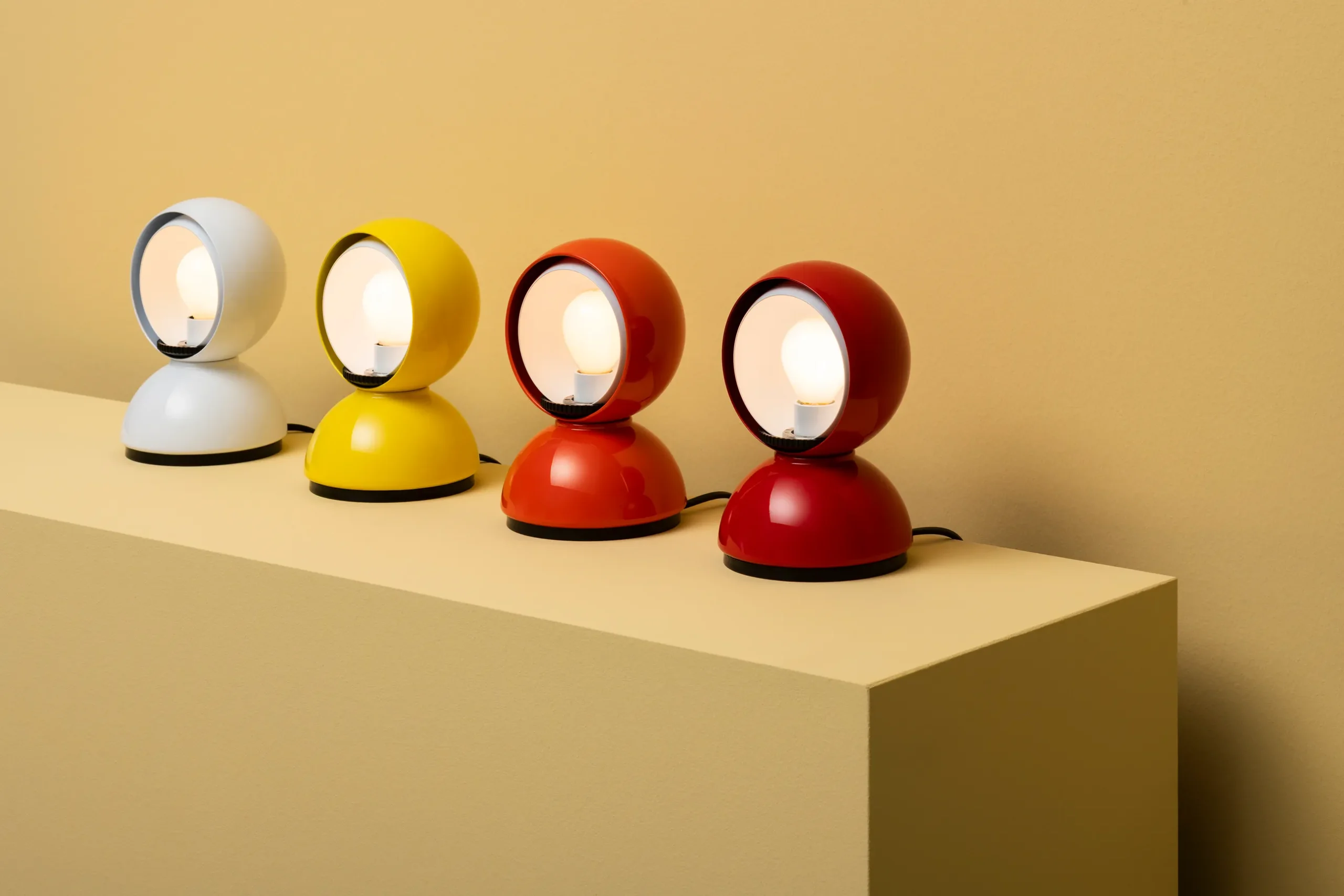
The first edition had some notable differences from later models. All parts were originally metallic, including the inner rotating shield. While this made the lamp robust—it was advertised as “unbreakable and stable”—it also meant the metal would heat up after being on for some time, risking burned fingers when adjusting the shield. Magistretti, apparently unfazed, joked about how “many people made love with this lamp nearby and, at the same time, burned their fingers.” Artemide, however, quickly addressed the issue. By the late 1960s, a black plastic ring was added around the rotating shell, allowing safe handling and eventually becoming a standard feature across future editions.
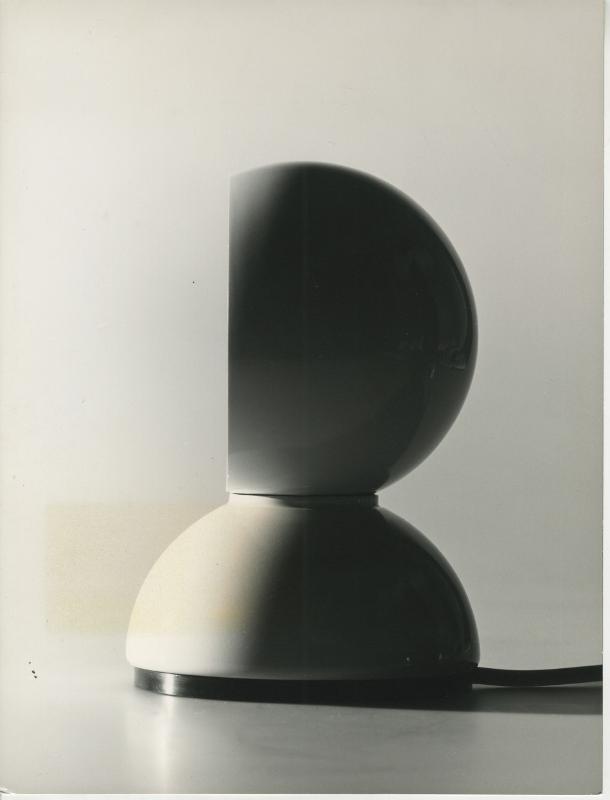
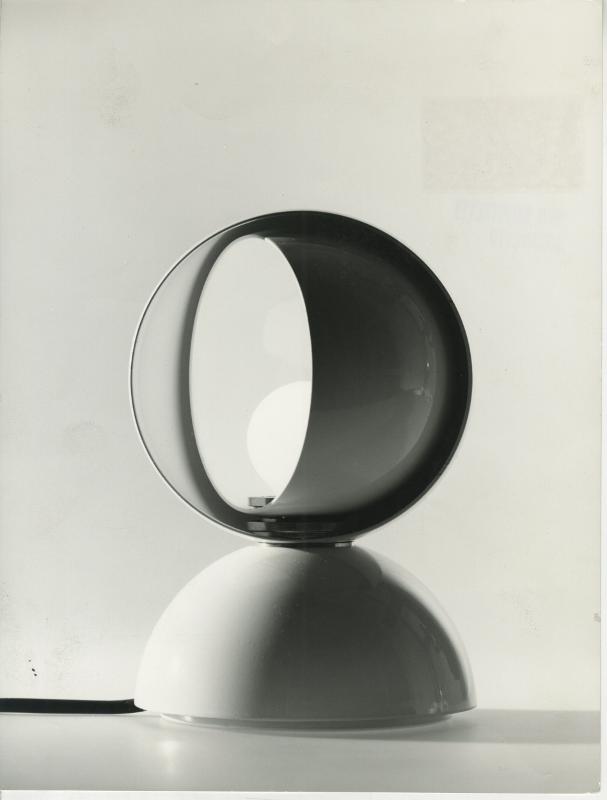
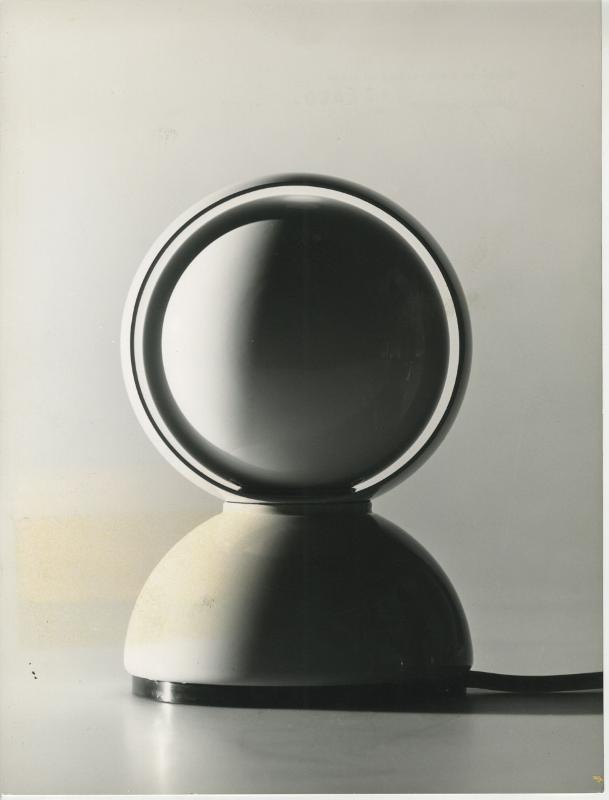
From a subway ticket to a design icon
Eclisse was instantly recognized as an innovation in lighting. Its formal originality, aesthetic harmony, and the technical novelty of adjustable light captured both critics and the public worldwide. In 1967, the same year it launched, it won the prestigious Compasso d’Oro—the highest award in Italian design. The jury praised its dual value of design excellence and potential for mass production, highlighting the rotating shield’s simplicity as a technical breakthrough.
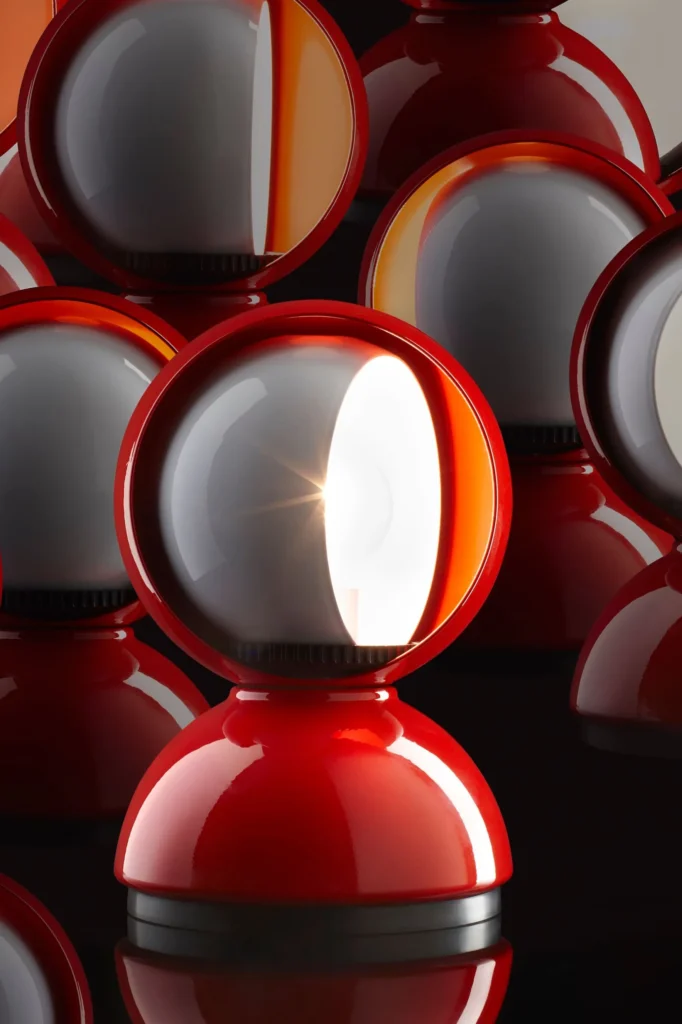
In other words, Eclisse bridged refined design and mass accessibility—a democratic and innovative design approach. From that point on, Magistretti’s small lamp became a symbol of Italian design, traveling from the Triennale in Milan to the MoMA in New York, entering both private homes and museum collections around the world.
Contemporary reinterpretations of the original Eclisse lamp
In more than fifty years of production, Artemide has made very few but meaningful technical adjustments while expanding the available finishes—without ever altering the original design. The first change, as mentioned, was the addition of the plastic ring in the late 1960s. Later, Artemide updated the materials, using painted steel (stronger than aluminum) and heat-resistant techno-polymer elements for internal components. The proportions, however, remain identical to the original—testament to the timelessness of Magistretti’s concept.
Meanwhile, the color range evolved. In addition to the original four hues (white, red, orange, yellow), Artemide introduced new special finishes in recent years. For its 50th anniversary and beyond, PVD (physical vapor deposition) versions were launched, offering elegant mirrored finishes in glossy black, brass (gold), copper, and chrome. These luxurious treatments appeal to contemporary tastes without betraying the lamp’s original identity.
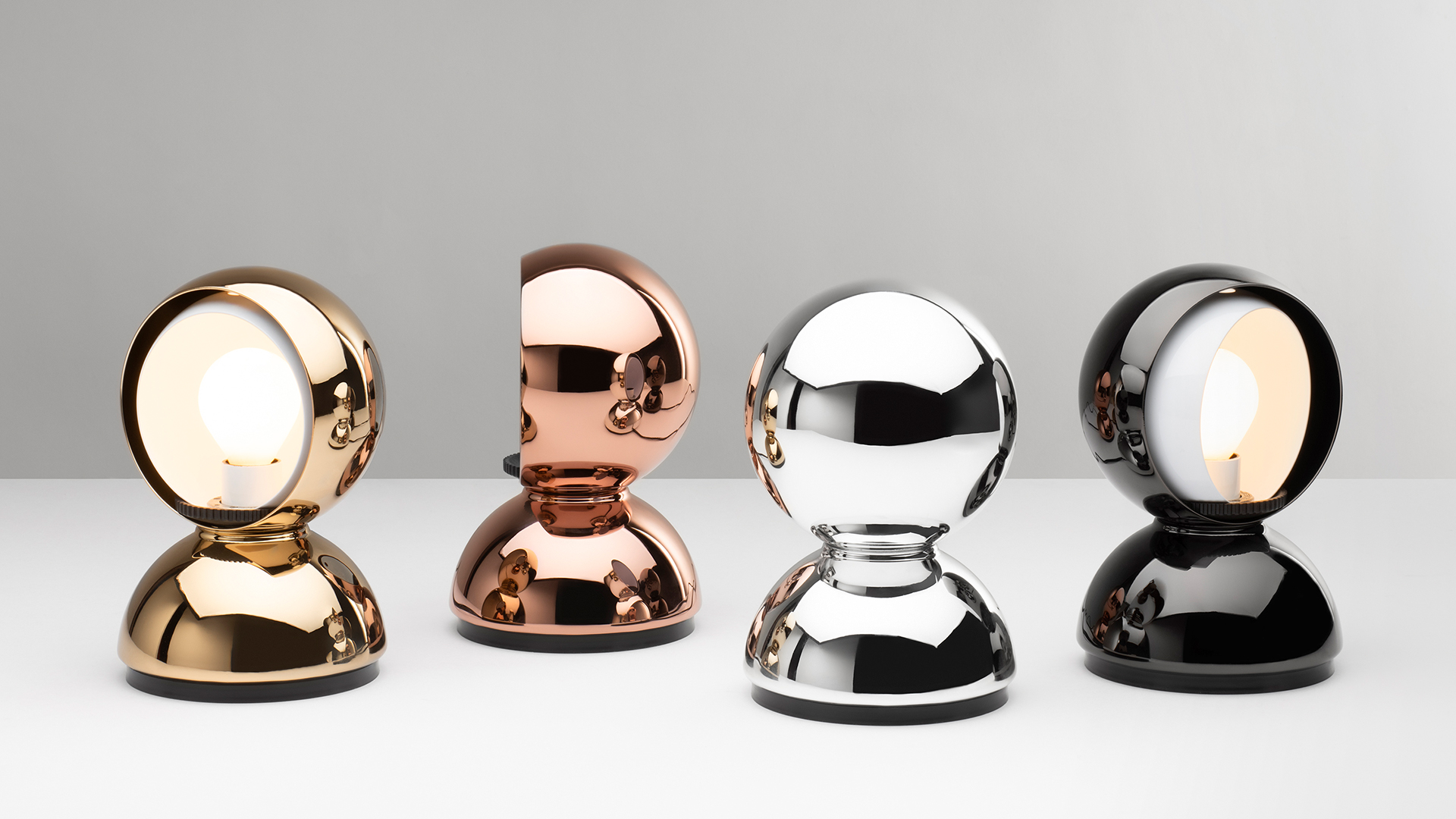
Despite evolving materials and finishes, both the original and modern Eclisse versions share the same design DNA. Magistretti created such a complete object that it never needed a radical redesign. He believed that good design should last at least a hundred years—and judging by Eclisse’s ongoing relevance, that prophecy seems well on its way to fulfillment.
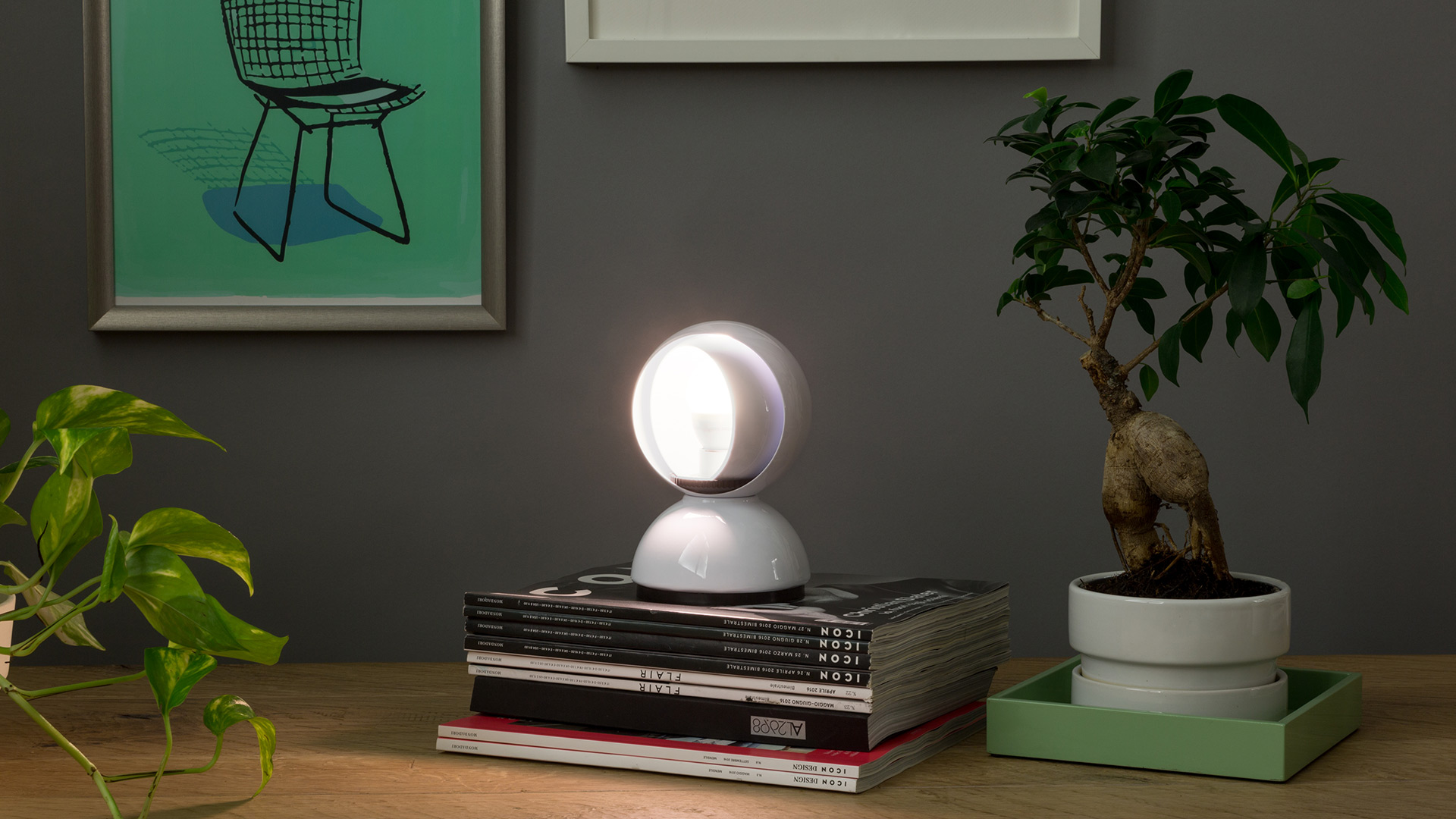
The historical and collectible value of Artemide’s Eclisse lamp
Eclisse’s uninterrupted production has made it a widely available piece, not extremely rare in the vintage market. Still, owning an original from the first series holds a special charm. Details like the vintage Artemide logo, the absence of the plastic ring in early units, or the patina developed over time give these models a unique character. On vintage platforms, original 1960s examples typically sell for a few hundred euros, depending on condition and color.
For instance, a vintage Eclisse in excellent condition might range from €125 to €200. Common colors like white, red, or orange are easier to find, while first-series versions in intense yellow (like the one at MoMA), or discontinued hues such as cobalt blue or pastel grey—extremely rare—are the most sought-after by collectors.
